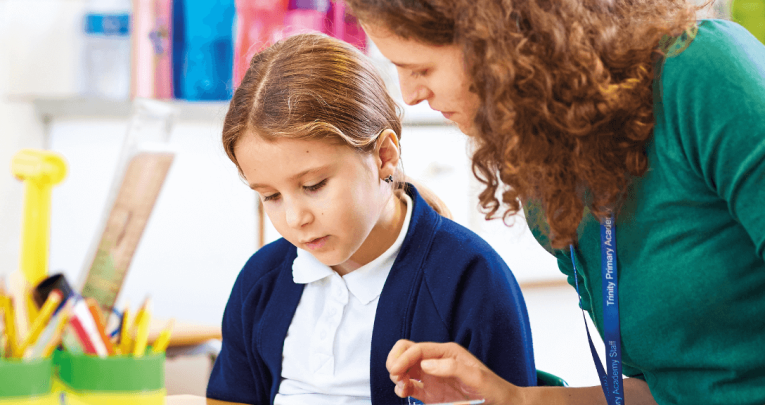Developing Fluency at the Right Time can Significantly Improve Literacy at KS2

The four core aspects of reading fluency are expression and volume, phrasing, smoothness and pace, says Megan Dixon…

- by Megan Dixon

Working with groups of children whose progress in learning to read seems to have plateaued is always fascinating. Prompt identification of a pupil’s specific literacy needs and the provision of appropriate support is critical to ensure they make sustained and continuing progress.
But, as the Education Endowment Foundation’s Guidance report Improving Literacy at KS2 emphasises, it is essential that the support offered is appropriate. The challenge comes in identifying the right approach at the right time.
Recently, I have noticed that many of the children I am working with have one thing in common: it is hard to listen to them read aloud.
They stumble and repeat themselves; they hesitate and pause; they are monotone, ignore any punctuation and often read in a ‘shotgun’ fashion, emphasising every word. Put simply, they don’t read with any fluency at all.
This was never more apparent than with Sophia, reading from Roald Dahl’s wonderful story, George’s Marvellous Medicine. She read every word with care and attention, accurately decoding and regularly stopping to check herself.
Occasionally, she would look up and smile at me before refocusing herself on each individual word on the page in front of her.
It took an age to read half a page and she was exhausted at the end of her reading session.
She appeared to have some understanding of the text and could explain in detail what had happened in the part she had just read, but she had a limited sense of the story and struggled to make any predictions.
I could make a prediction though – unless we started to help her read with more fluency, Sophia was going to find KS2 increasingly challenging.
It is sometimes said that children like Sophia will just improve, given time. Maybe she needed more practice. Or more phonics teaching. But was that really the answer?
The Improving Literacy at KS2 guidance report emphasises that more often than not, as long as there are no decoding difficulties, shifting the emphasis in teaching to developing fluency can have a significant impact.
But what does that really mean? Does that always mean reading fast? No, not always.
We read different texts at different speeds and reading too fast means that we can hinder comprehension. It can be like watching a film sped up; you only get snapshots of what is going in instead of the complete story.
The Multidimensional Fluency Scale, developed by Timothy Rasiniski and colleagues, is a really helpful way of understanding the different aspects of reading fluency and unpicking the four core aspects: expression and volume, phrasing, smoothness and pace.
By using this scale, it is easy to identify one or two areas to focus on explicitly.
With Sophia, I decided to focus on her phrasing to start with. I thought it would help her to understand that she could read groups of words together and use the punctuation to guide her. This would help to increase the pace she read with and be less tiring for her.
My first suggestion to her was to stop pointing at the words with her finger. Once children can match what they are saying to the words on the page (that is, they only read what is there and don’t add anything else in), using a finger to point can be a hindrance.
Our eyes move much faster than we can control our fingers and for Sophia, it was helping to emphasise she should look at each and every word in detail. This was hard! The finger kept creeping back and so I suggested she put her finger at the end of every line of the text, rather than under each word.
Secondly, we used a repeated reading approach to help her understand what it felt like to read with phrasing. I selected a short extract from George’s Marvellous Medicine and photocopied it so we could both have it.
We looked at it together and noticed where the punctuation was. I modelled how to read groups of two to three words together without stopping, and how to use my fingers to ‘trap’ (or put my fingers around) these whole phrases.
I chose phrases that included one or two adjectives and a noun, such as “a piece of lettuce” and “a tiny, wrinkled hole” and groups of words that can be predicted easily if you are following the story – “she said”, for example.
Together we ran through how to read these phrases without pausing after every word. She quickly understood and practised reading the extract independently until she could do so quickly and with phrasing.
We continued with the same approach on other extracts and it was not long before Sophia was applying her phrasing to other unfamiliar texts and teaching the children in her reading group how reading should sound.
Half a term later, Sophia was reading with speed, phrasing and some smoothness, too. Her faster pace has enabled her to finish books quickly and so the amount of reading she does has increased too – helping her to learn more and more.
Developing fluent readers in the classroom can be tricky. There are no quick wins and not all children make quick progress like Sophia, but that just means we should have an explicit focus on teaching children to read fluently.
Paying attention to how children sound when they read aloud, noticing the finer details of the challenges they face, helps ensure the support offered is appropriate. The right approach at the right time makes for fluent readers.
Megan Dixon is director of English at the Aspire Educational Trust.










